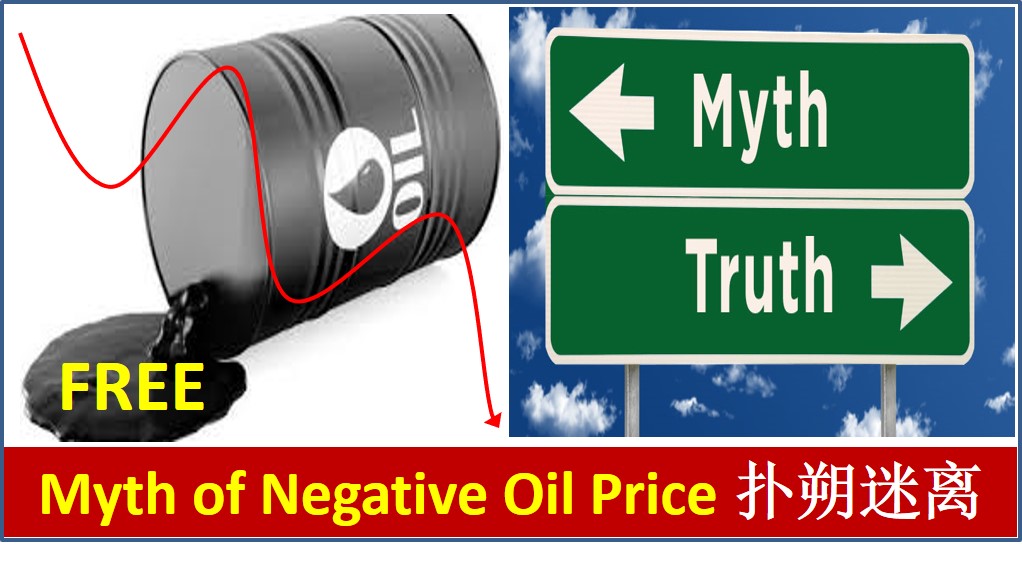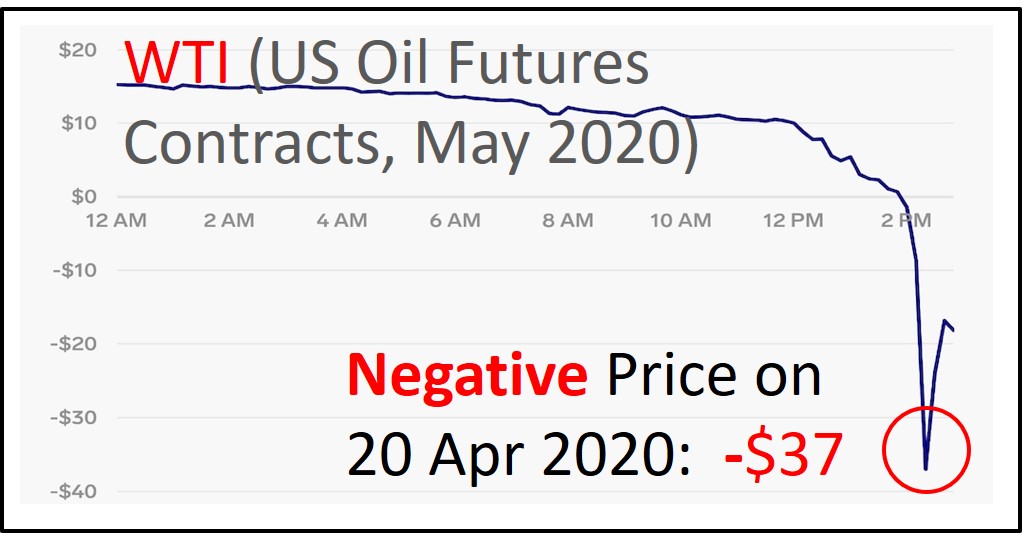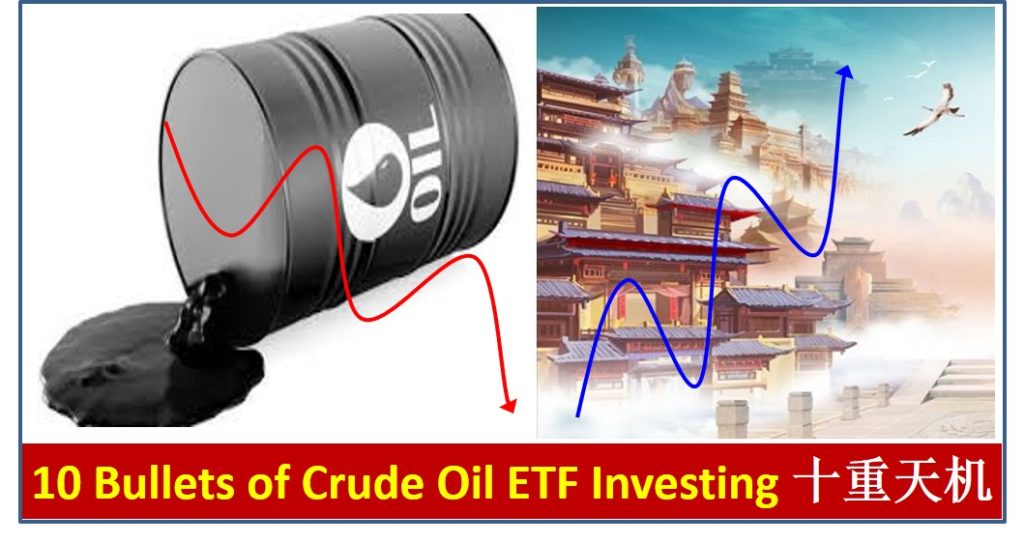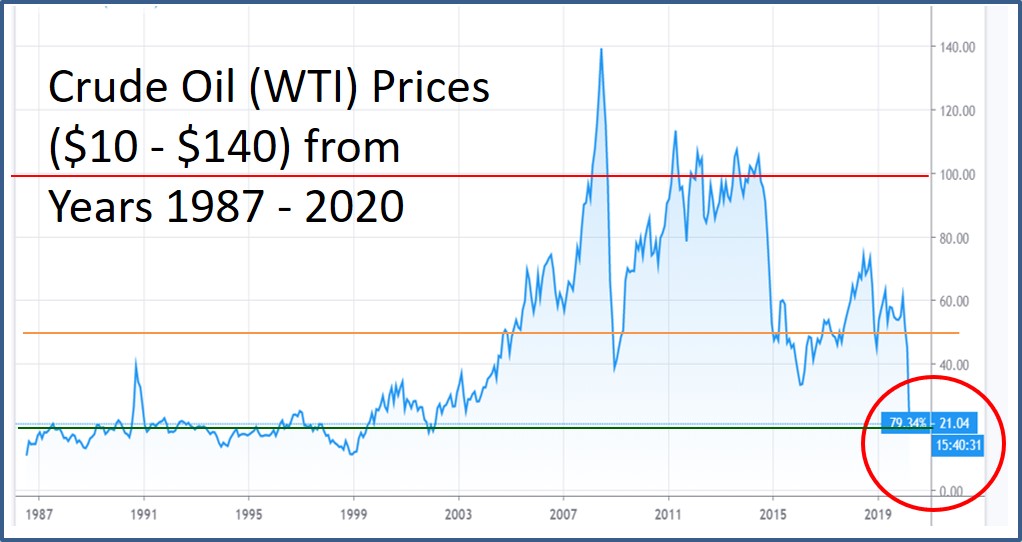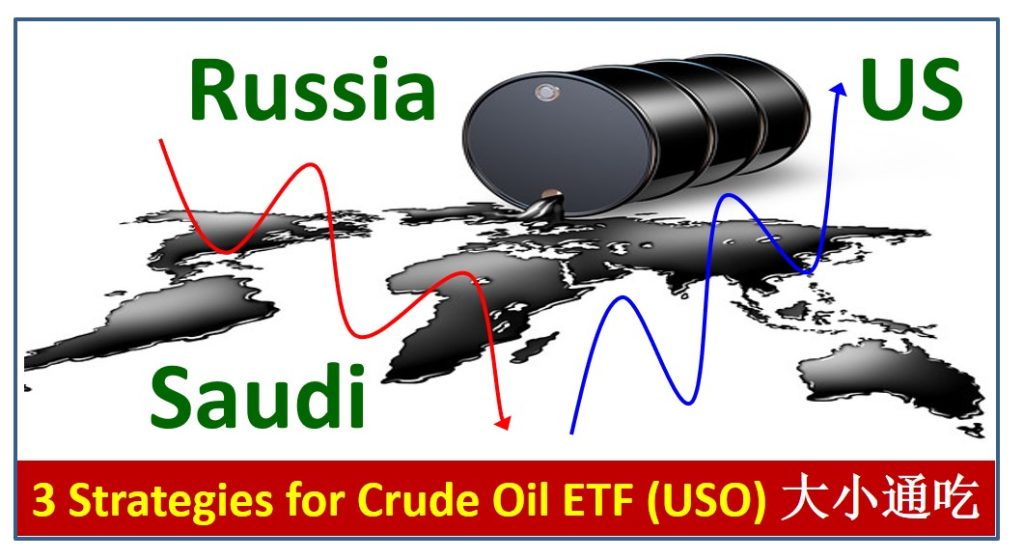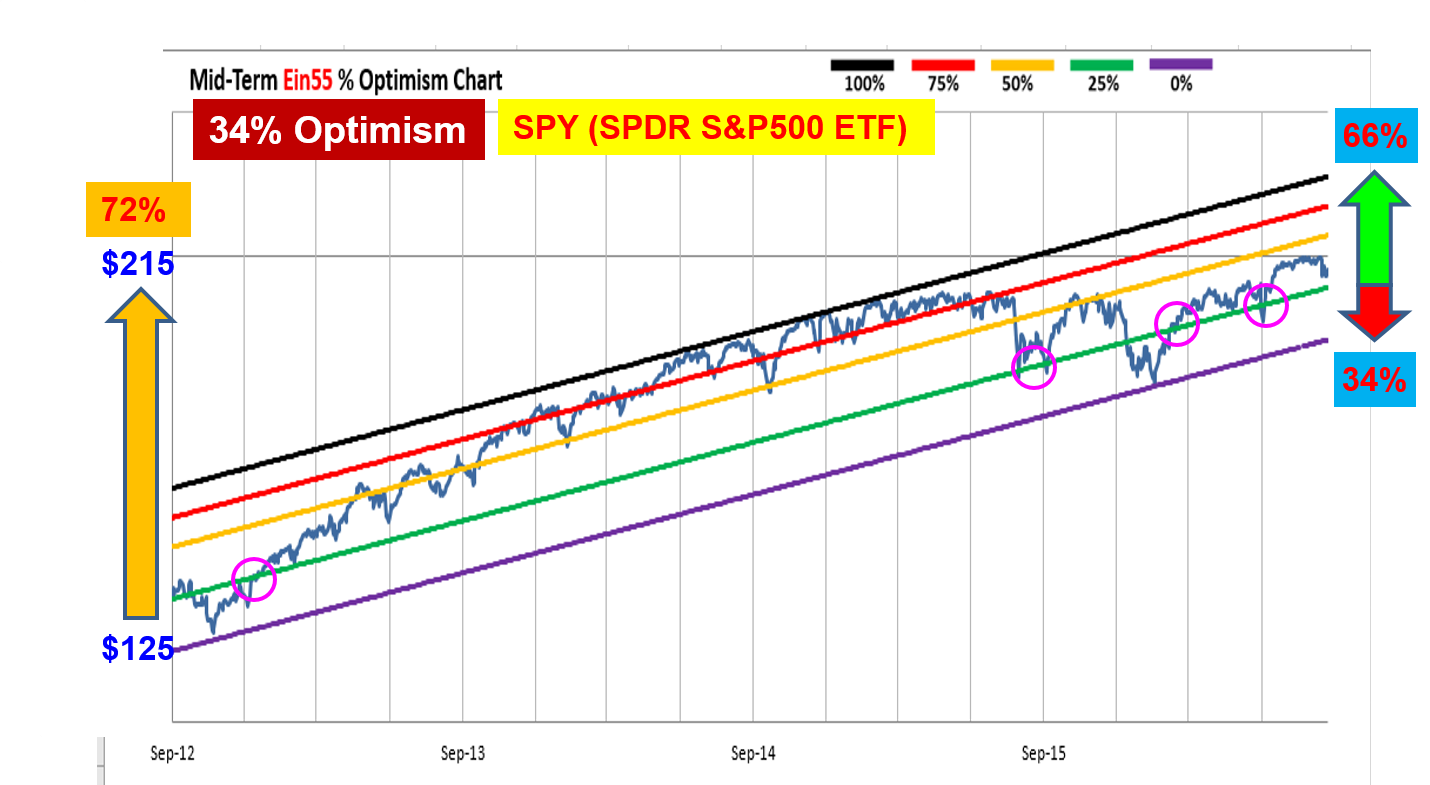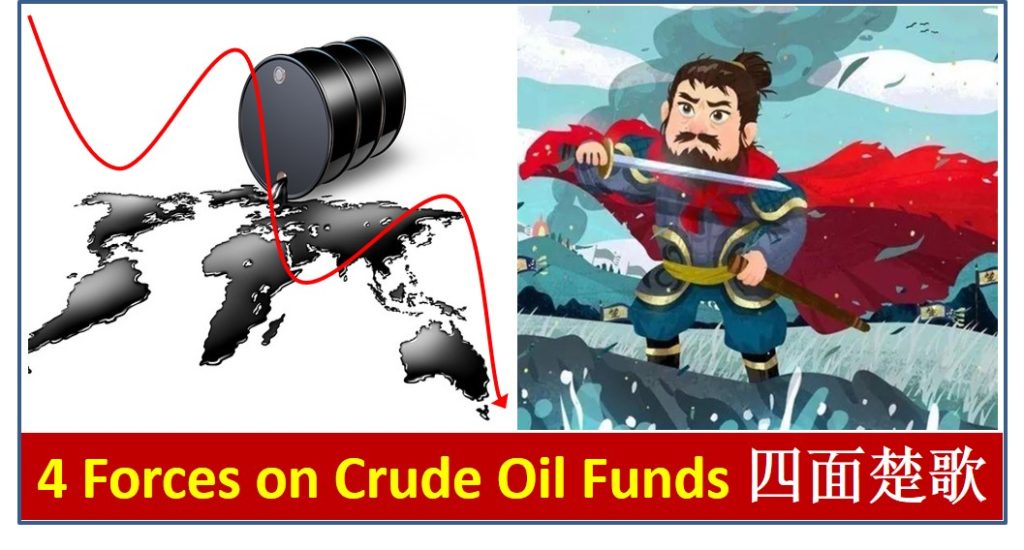
Crude oil is a commodity giant, similar to gold, physical price should not drop to $0. However, it is possible for derivatives of crude oil (eg. futures contracts) to drop below zero under special condition, eg. US oil price for WTI was negative $37/barrel for May 2020 futures contract during the most fearful time in Coronavirus pandemic with the lowest energy demand due to lockdown in US and global countries.
For gold commodity, investor could buy physical gold bar (if price drops below zero) and hide under pillow or as display at home. For crude oil commodity, investors could not keep the explosive materials at home, therefore need to have storage place which would incur high cost during the pandemic period as oil storage level is near to its maximum level, may be full by mid of May 2020. Therefore, investors who buy oil, even at positive prices, may not able to store the oil unless demand is more than supply, only then there is new room for storage.
Nevertheless, oil commodity is still a giant for longer term investing. However, there is no ideal way to invest directly in oil, each option has its own pros and cons. Typical ways are through oil futures trading, oil ETF (eg. USO, UCO, BNO, etc), energy ETF (eg. XLE, VDE, etc) or major oil & gas stocks (eg. Exxon Mobil – NYSE: XOM, Chevron – NYSE: CVX, etc).
Among all options, USO oil ETF (the largest crude oil ETF fund in the world) is a compromised way for investing in short term to mid term to follow oil price but investors may need to pay for monthly holding cost due to losses in contango (reversed is holding gain during backwardation, search for past articles by Dr Tee for details). Oil & gas stocks are more suitable for long term investing (benefiting from oil price recovery indirectly through business) but investors has risk of weaker oil & gas companies may go bankrupt during oil crisis with prolonged low oil price, therefore safer to focus in giant oil & gas stocks with strong business fundamental, continue to be profitable even during last 5 years of oil crisis.
USO (WTI oil ETF) and oil commodity used to have good correlation within about 3 years (longer than that, contango will show significant difference, reducing the capital gains). The past few months of high contango (especially for May 2020 futures contract) has resulted in USO value declining significantly. If oil futures continue to drop to negative prices for June 2020 and a few more months, not only USO may have risk of going bankrupt (NAV approaching $0), even many global oil & gas companies may disappear (Hin Leong Trading of Singapore is just an example of victim).
The correlation between USO and WTI oil is used to be this way:
Oil (WTI) / USO (ratio is about $1/barrel oil = $0.21 USO)
=============
$20 / $4.20
So, when oil price drops proportionally in a gradual way within months or years (not within 1 day), USO (without high contango) may follow closely in this manner:
Oil (WTI) / USO (ratio is about $1/barrel oil = $0.21 USO)
=============
$20 / $4.20
$15 / $3.15
$10 / $2.10
$5 / $1.05
$1 / $0.21
However, oil market becomes speculative during Coronavirus pandemic, negative oil price (happened only for 1 day) becomes the victim. USO suffered great loss in that day of negative price. USO has about 20-25% risk exposures for May 2020 futures contracts, probably could still sell at low prices above $0, therefore overall losses are about 25% due to rollover to June 2020 futures contract with higher prices. USO is in a better shape than other oil fund, eg. Bank of China oil fund (Yuanyou Bao – 原油宝) which selling May 2020 futures contract at closing market price of negative $37/barrel), suffering permanent damage, risk is much higher (this fund is stopped for new investors). Despite oil prices fell to negative region, actual transaction are fewer, prices for nearby month futures contract (Jun 2020) quickly recover, now back to a more normal price of $17/barrel.
USO oil ETF is the largest oil ETF, could quickly get new investors with new funds whenever there is a new in oil prices. Even so, USO suffers major correction over the past 1 month, the new correlation (with USO contango losses) as of now is
Oil (WTI) / USO (ratio is about $1/barrel oil = $0.15 USO), new ratio based on 24 Apr 2020
=============
$17.30 / $2.57
So, for every $1/barrel oil price, it means USO has depreciated from equivalent $0.21 (before negative oil price) to $0.15 (after negative oil price), about 25% loss due to contango during that day with negative oil price (rollover from May to Jun 2020 futures contract with historical high price gap). If June 2020 happens again for negative oil price (may or may not happen again, only knows about a few weeks later), USO would suffer more losses again.
Whether USO (and other oil ETFs) may go bankrupt (NAV approaching zero) in short term or could survive and recover together with oil commodity giant in longer term, depending on these 4 market forces:
1) Coronavirus (Demand vs Supply)
How long would Coronavirus last and when US would restart economy are keys. This determines when demand > supply for oil. Now oil supply < demand during pandemic. Based on the current Coronavirus trends, there is earlier sign that US has reached intermediate peak of new daily cases but downtrend is not so clear. With 50 states of US take turn to restart the economy, there is high risk of second peak with more infection (this is reflected in Europe countries as well with restart of economy too early).
If there is no major change in policy, Coronavirus could fade away in June for US but this implies at least 2 more months of low demand for oil price. So, there is at least 2 months of winter time for low demand for oil in US and even the world (similar trends as US).
2) Oil Storage Limit (Demand = Supply)
In the near term (eg. June – July 2020 futures contracts), it is possible for negative oil prices to happen again, especially oil storage in US will reach maximum limit by mid of May 2020, market sentiments with great fear (四面楚歌) may cause abnormal negative oil prices again.
By then, new oil produced has no more storage. So, demand = supply for oil when there is no more new storage. It means most oil & gas companies would lose more money (no oil = no income), there is high expenses to shutdown the oil well. When more oil & gas companies go bankrupt or stopping production, naturally supply will be less (even demand is still low), oil price could be supported but it would take months for some weaker companies with little cash reserves to burn out first. When company goes bankrupt, it is bad news for energy sector ETF (eg. XLE) as it is business fundamental dependent but it could be good news for oil market (survival of the fittest).
During bearish market, for farmers, historically there were cases of some pour away milk (or destroy vegetables), instead of selling at low prices or given free. This is a way to reduce supply to support the “commodity” price. The idea is the same for oil but it could be a challenge to throw away oil as it requires proper way to dispose the explosive materials, any spill would be a high cost to clean.
3) Political Economy (Invisible Hands)
US government may intervene when more US shale oil companies go bankrupt with over 6 months without much production (no place to store oil if producing anymore) if demand is low during pandemic. Collapse of oil & gas industry (if not saved by global countries), may start with US shales oil company with production cost of $50/barrel, burning money each month when oil price is below $20/barrel. After that, it may extend globally to OPEC and non-OPEC (eg. Russia with production cost of $20/barrel), eventually even Saudi with the lowest production cost ($5/barrel) may not able to survive.
Historically, oil & gas companies are strong supporters of local government, contributing to local economy, creating jobs. Therefore, there is high possibility that global stimulus plans (including “unlimited QE” of US) would save this key industry for collapsing in short term, so that it could recover again in mid to long term with natural demand > supply when Coronavirus crisis is over.
In fact, there is no need for demand > supply for oil price to goes up. As long as oil storage reaches a limit, no new drop of oil could be produced before it is being used, so oil price would be stable. This is similar to 0% car growth rate in Singapore, for each car deregistered, only then a new car COE (Certificate of Entitlement) may be issued, therefore the car price would not drop to zero. However, under extreme fearful condition, it is still possible for car COE to drop to $1 but car price would never drop to zero unless there is a derivate for car such as “futures contracts of Singapore cars”, only then it is possible to have negative prices, implying car buyer would get paid when buying a car.
If oil market is speculative (eg. negative oil price by right should not happen), when oil is at very low price, eg $10 or $5 or $1/barrel, then shorting won’t help much as even USO may go bankrupt, then not much “meat” of profits left. If so, the “invisible hands” (big boys) may start to turn to long oil price to profits again from oil, but using reserved direction. So, who are these invisible hands? It could be big investment funds (non-oil related), major oil producers themselves (covering the losses in oil prices with investing in giant oil & gas stocks at very low prices). In the next 6-12 months, we may know who are the big gainers in oil market, then invisible hands would be clearer. Usually they could affect the oil prices, therefore there could be major news in next few months if they decide to turn the oil market around again.
4) Size of Oil Funds (Strength of Fund)
New global investment would keep on coming to oil ETF funds (including USO, the largest and most popular fund, despite it has contango issue with high holding cost), especially whenever oil prices coming to new low. The reason is there is no other better way to invest in crude oil, unlike some people could buy gold or silver and keep at home for price appreciation one day.
If USO losses in contango is supported by new funds (entering at lower unit price), the fund still has positive NAV, could still continue follow the oil prices for possible recovery. It means this is a mind game between high rollover cost (monthly holding cost) vs tremendous high potential of oil prices (when demand > supply with no market threat one day). If USO could last until oil prices reverse the mega trend (from the worst case, could be negative $37 or even lower), then the high rollover cost of contango is a good issue to have because capital gains from higher oil price could offset this holding cost. However, an USO investor may not expect 100% capital gains when oil prices recovers from $15 to $30/barrel as there was cost incurred during the holding period.
However, when fewer new funds come in, USO continues to lose in contango for 6-12 months with negative oil prices or large monthly prices gaps, then possible even for USO to go bankrupt but this will be a very severe market condition as it means many oil & gas companies may also bankrupt at the same time (even XLE would have serious correction, many oil & gas stocks would disappear). Before that, smaller oil funds which are less popular would go bankrupt first if could not last through the winter of high contango with low oil prices.
USO plans for 1-for-8 reverse share split (stock consolidation to 8x higher price by reducing the number of shares), price gap from $0 (psychological limit) would be further, giving more rooms for contango to erode the prices with monthly holding cost. In addition, USO also could rollover to 2 months later, not just to next month of futures contracts which could avoid high right of negative oil prices. However, if so, correlation of USO and oil commodity would be weaker, may not benefit fully when oil prices recover in very short term (eg. certain unexpected good news from major forces mentioned).
In short, size does matter for oil ETF. USO could not be 100% protected as it is based on derivatives of oil futures contracts, therefore it is not the same as oil commodity which is a giant. USO is a conditional giant when the rising oil prices could offset the contango cost. If contango cost is more and faster than the rising oil prices, then any oil funds (including USO and many other oil funds) or even oil producer countries (not just companies) have to go bankrupt.
===============================
In short, whether USO and other global oil ETF funds or even many oil & gas companies may go bankrupt depends mainly on 4 factors above, a power struggling among big funds, invisible hands, Coronavirus and oil storage limit. If USO could still survive and reverse the trend, due to recent contango losses, the capital gains (eg. when oil price is over $30/barrel again) would be less. For an investor entering USO around $4 with oil price around $20/barrel, after 25% contango loss (could be more), may need to wait for oil price to recover to about $30/barrel to breakeven.
It will be a mind game among the earlier 4 market forces to determine up and down and mega direction of oil prices. Oil commodity is still a giant but it has become a tool for speculation, behaving in an abnormal way. USO oil ETF is based on oil commodity derivative, not a giant during contango period with low oil prices, especially during negative oil price which is very abnormal, mainly due to complex interaction of 4 market forces.
So, investors of oil funds must understand own personality, how much risk tolerances (any diversification or position sizing or cut loss measure) could take as crude oil is a high volatile and speculative market due to unpredictable market forces, especially during this period. Hope the sharing on oil market has helped readers. Please make your own decision for investing.
There is no need for investors to take risk to invest in crisis commodity or crisis stocks. There are many giant global giant stocks which could continue to grow in business and remain profitable during Coronavirus pandemic. Dr Tee spends about half a day to prepare this article as some readers may be worrying about the crude oil market, including chance of survival of oil ETF funds. When I finish the article, it is about 8pm, very touched to hear the cheering sounds all over the neighbourhood, motivating one another during this pandemic crisis. Even we may not know when the health or financial crisis may be over but we have faith that it will be over one time, so we need to ensure we are safe during this period of uncertainty, staying healthy by exercise more and enriching mind with valuable investment knowledge.
==================================
Drop by Dr Tee free 4hr investment course to learn how to position in global giant stocks of growing sectors with 3 value investing strategies (undervalue, growth, dividend stocks), knowing What to Buy, When to Buy/Sell.
Learn further from Dr Tee valuable 7hr Online Course, both English (How to Discover Giant Stocks) and Chinese (价值投资法: 探测强巨股) options, specially for learners who prefer to master stock investment strategies of over 100 global giant stocks at the comfort of home.
You are invited to join Dr Tee private investment forum (educational platform, no commercial is allowed) to learn more investment knowledge, interacting with over 9000 member.

